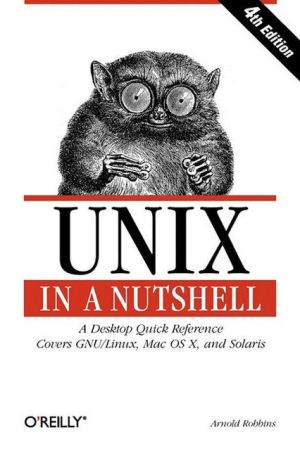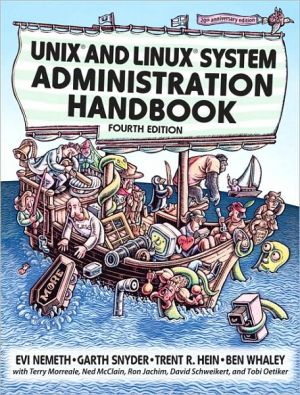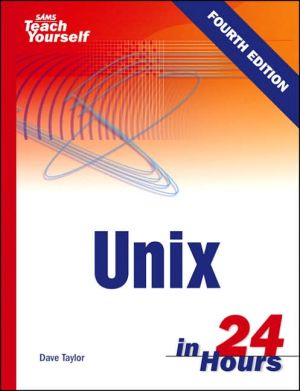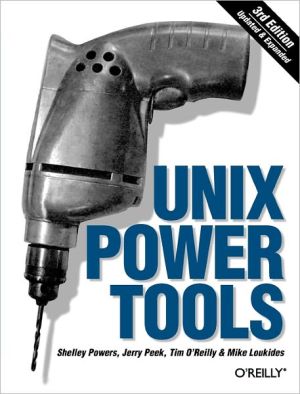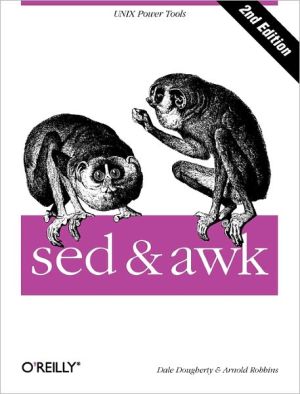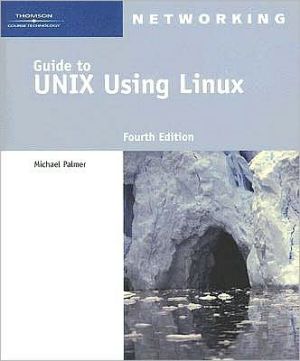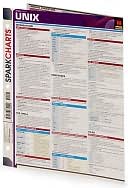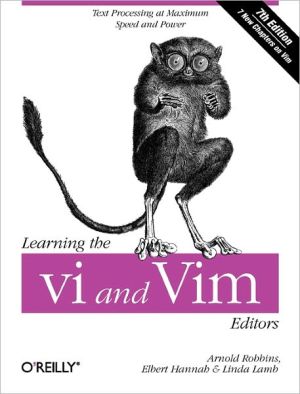UNIX Unbounded : Beginning Approach
This handbook uses straightforward examples to introduce the UNIX operating system, including its historical development, major versions, and important features. It covers the topics necessary for users to function independently and handle routine tasks, giving readers a foundation for exploring more advanced UNIX topics. Builds knowledge with a general explanation of concepts and topics, followed by more detailed and complex commands and examples as the chapter progresses. Explains the...
Search in google:
This handbook uses straightforward examples to introduce the UNIX operating system, including its historical development, major versions, and important features. It covers the topics necessary for users to function independently and handle routine tasks, giving readers a foundation for exploring more advanced UNIX topics.Builds knowledge with a general explanation of concepts and topics, followed by more detailed and complex commands and examples as the chapter progresses. Explains the importance of the operating system and explores its primary functions. Includes a new chapter on the Emacs editor as an alternative to the vi editor.For those interested in learning more about the UNIX operating system.
CONTENTSNote: Each chapter concludes with Review Exercises.1: First Thing First1.1 Introduction1.2 Computers: An Overview1.3 Computer Hardware1.4 Process Operation1.5 What Is Software2: The Unix Operating System2.1 Introduction2.2 Other Unix Systems2.3 Overview Of The Unix Operating System2.4 Unix Features3: Getting Started3.1 Establishing Contact With Unix3.2 Using Some Simple Commands3.3 Getting Help3.4 Correcting Typing Mistakes3.5 Using Shells And Utilities3.6 More About Logging-In ProcessCommand SummaryTerminal Session4: The Vi Editor: First Look4.1 What Is An Editor4.2 The Vi Editor4.3 Basic Vi Editor Commands4.4 Memory BuffersCommand SummaryTerminal Session5: Introduction To The Unix File System5.1 Disk Organization5.2 File Types Under Unix5.3 All About Directories5.4 Directory Commands5.5 Displaying Files Contents5.6 Printing Files Contents5.7 Deleting FilesCommand SummaryTerminal Session6: The Vi Editor: Last Look6.1 More About The Vi Editor6.2 Rearranging Text6.3 Scope Of The Vi Operators6.4 Using Buffers In Vi6.5 The Cursor Positioning Keys6.6 Customizing The Vi Editor6.7 The Last Of The Great Vi Commands6 (Alternative): The Emacs Editor6.1 Introduction6.2 Starting Emacs6.3 Emacs Screen6.4 Ending Emacs6.5 Helps In Emacs6.6 Cursor Movement Keys6.7 Deleting Text6.8 Rearranging Text6.9 Case Conversion Commands6.10 File Manipulation6.11 Emacs Buffers6.12 File Recovery Option6.13 Search And Replacing6.14 Emacs Windows6.15 The .Emacs File6.16 Command Line OptionsCommand SummaryTerminal Session7: The Unix File System Continued7.1 Reading/Viewing Files7.2 Shell Redirection7.3 Enhanced File Printing7.4 File Manipulation Commands7.5 Filename Substitution7.6 More File Manipulation Commands7.7 Unix Internals: The File SystemCommand SummaryTerminal Session8: Exploring The Shell8.1 The Unix Shell8.2 Shell Variables8.3 More Metacharacters)8.4 More Unix Utilities8.5 Startup Files8.6 Korn And Bourne Again Shells8.7 Unix Process ManagementCommand SummaryTerminal Session9: Unix Communication9.1 Ways To Communicate9.2 Electronic Mail9.3 Mailx Input Mode9.4 Mailx Command Mode9.5 Customizing The Mailx Environment9.6 Communication Outside The Local SystemCommand SummaryTerminal Session10: Program Development10.1 Program Development10.2 Programming Languages10.3 Programming Mechanics10.4 A Simple C++ Program10.5 Unix Program Tracking UtilitiesCommand SummaryTerminal Session11: Shell Programming11.1 Understanding Unix Shell Programming Language11.2 Writing More Shell Scripts11.3 Exploring Shell Programming Basics11.4 Arithmetic Operations11.5 The Loop Constructs11.6 Debugging Shell ProgramsCommand SummaryTerminal Session12: Shell Scripts: Writing Applications12.1 Writing Applications12.2 Unix Internals: The Signals12.3 More About Terminals12.4 More Commands12.5 A Menu Driven Application13: Farewell To Unix13.1 Disk Space13.2 More Unix Commands13.3 Spelling Error Correction13.4 Unix Security13.5 Using Ftp13.6 Working With Compressed Files13.7 Telnet Command13.8 Remote ComputingCommand SummaryTerminal SessionAppendices.

